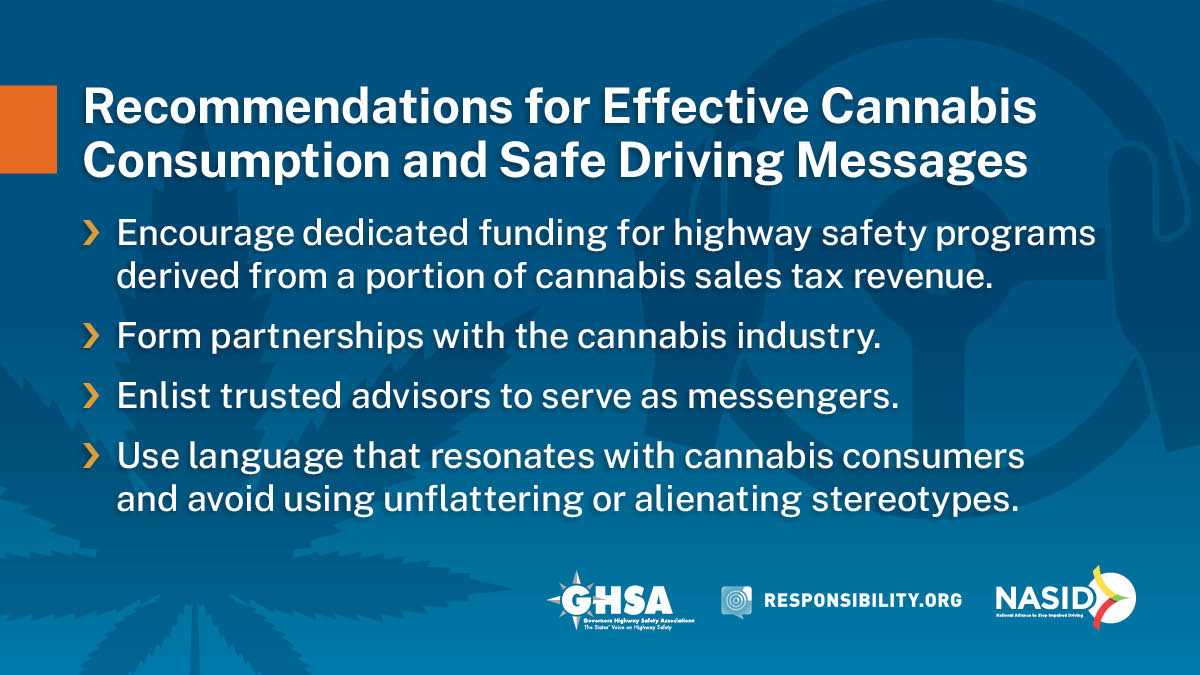
GHSA’s new report with Responsibility.org and the National Alliance to Stop Impaired Driving (NASID), Cannabis Consumers and Safe Driving: Responsible Use Messaging, provides guidance on how State Highway Safety Offices (SHSOs) can better communicate with cannabis consumers about safe driving and offers recommendations about the types of messages that do and don’t work.
SHSOs face a rapidly changing cannabis landscape, including the legality, the prevalence and the social norms about its use. Even as more people become familiar with cannabis and as calls for national legalization grow, there remains a significant disconnect between people’s views on its use and safe driving, emphasizing the need for effective public outreach and education. An AAA Foundation for Traffic Safety survey found that 95% of people say driving while over the legal blood alcohol concentration (BAC) limit is very or extremely dangerous, but only 69% believe it is dangerous to drive within an hour of consuming cannabis. Some people even think that cannabis use improves their driving. But research confirms that cannabis directly affects the parts of the brain responsible for attention, decision-making, coordination, and reaction time, which are all critical for safe driving.
The report highlights lessons learned from outreach efforts in Colorado and Washington, the first states to legalize cannabis, as well as more recent efforts in Connecticut and Wyoming. It also discusses promising practices that all SHSOs should consider utilizing to create the most effective messages and offers the following recommendations:
- Encourage dedicated funding for traffic safety programs derived from a portion of cannabis sales tax revenue so that states and their partners can deliver timely and relevant information to the public.
- Form partnerships with the cannabis industry, which can help states gain insights on consumer motivations and behaviors, develop and deliver impactful messaging and legitimize safety efforts.
- Enlist trusted advisors to serve as messengers. Have people and institutions that cannabis users trust – rather than government representatives – convey factual safe driving messages. Diverse and non-traditional messengers can improve message reception with cannabis consumers.
- Use language that resonates with cannabis consumers, so they hear the safe driving message instead of tuning it out because it has outdated terminology. Avoid using unflattering or alienating stereotypes of cannabis consumers.
The NASID website features an interactive, online database updated in real-time that lets users easily see cannabis and DUI laws across the U.S.
Infographic Available for Download
A JPEG of the following infographic is available for download under "Resource Downloads" below.

